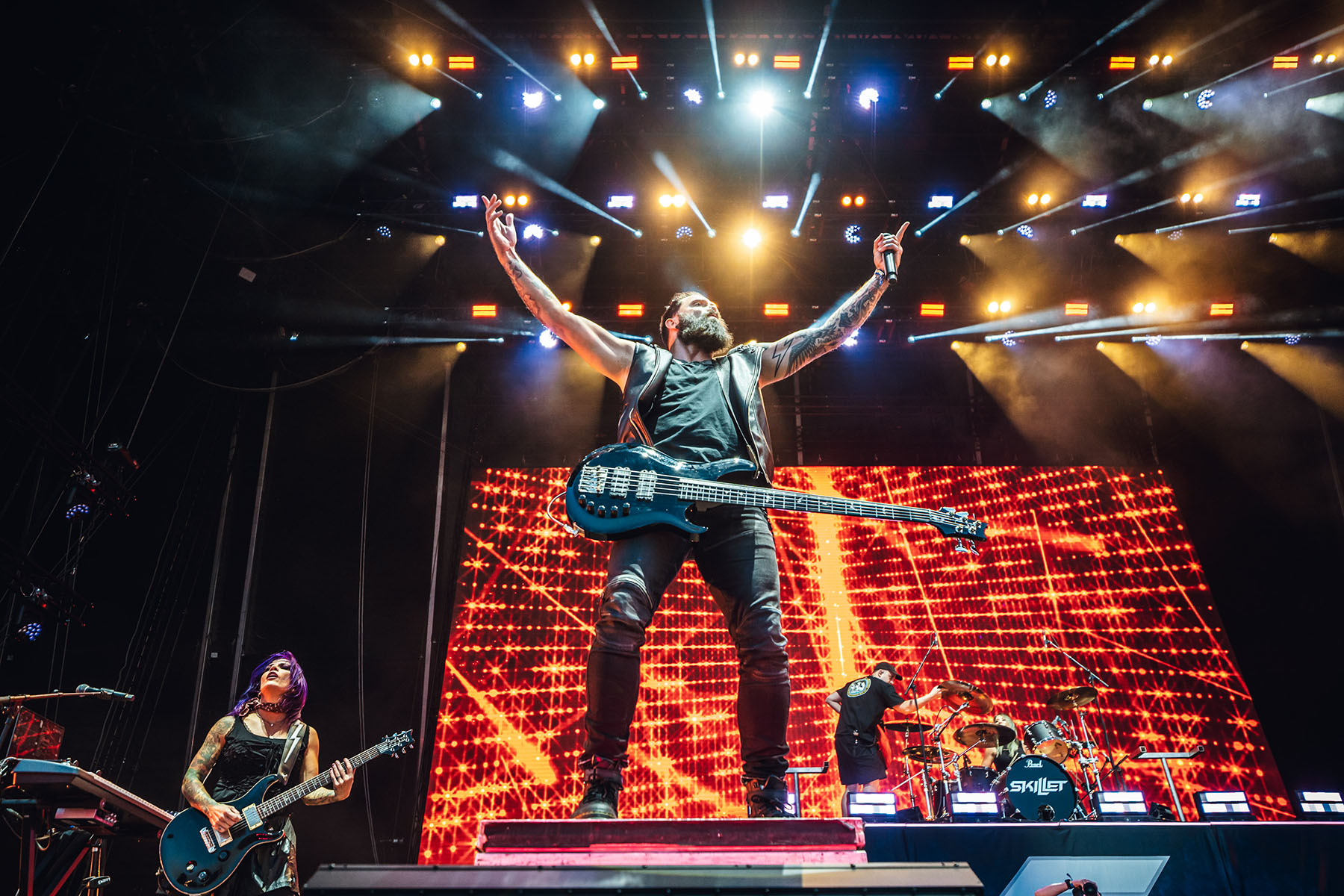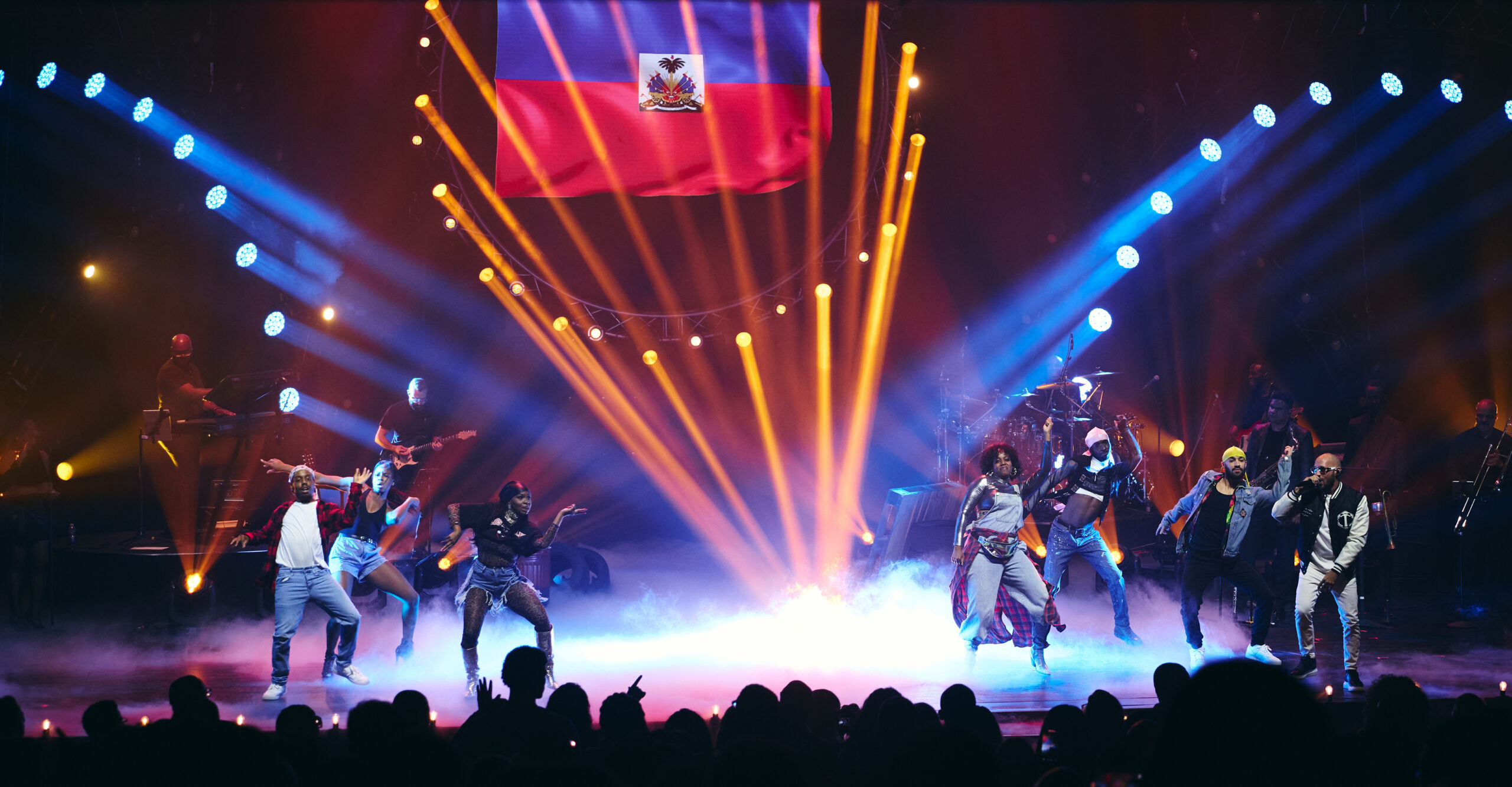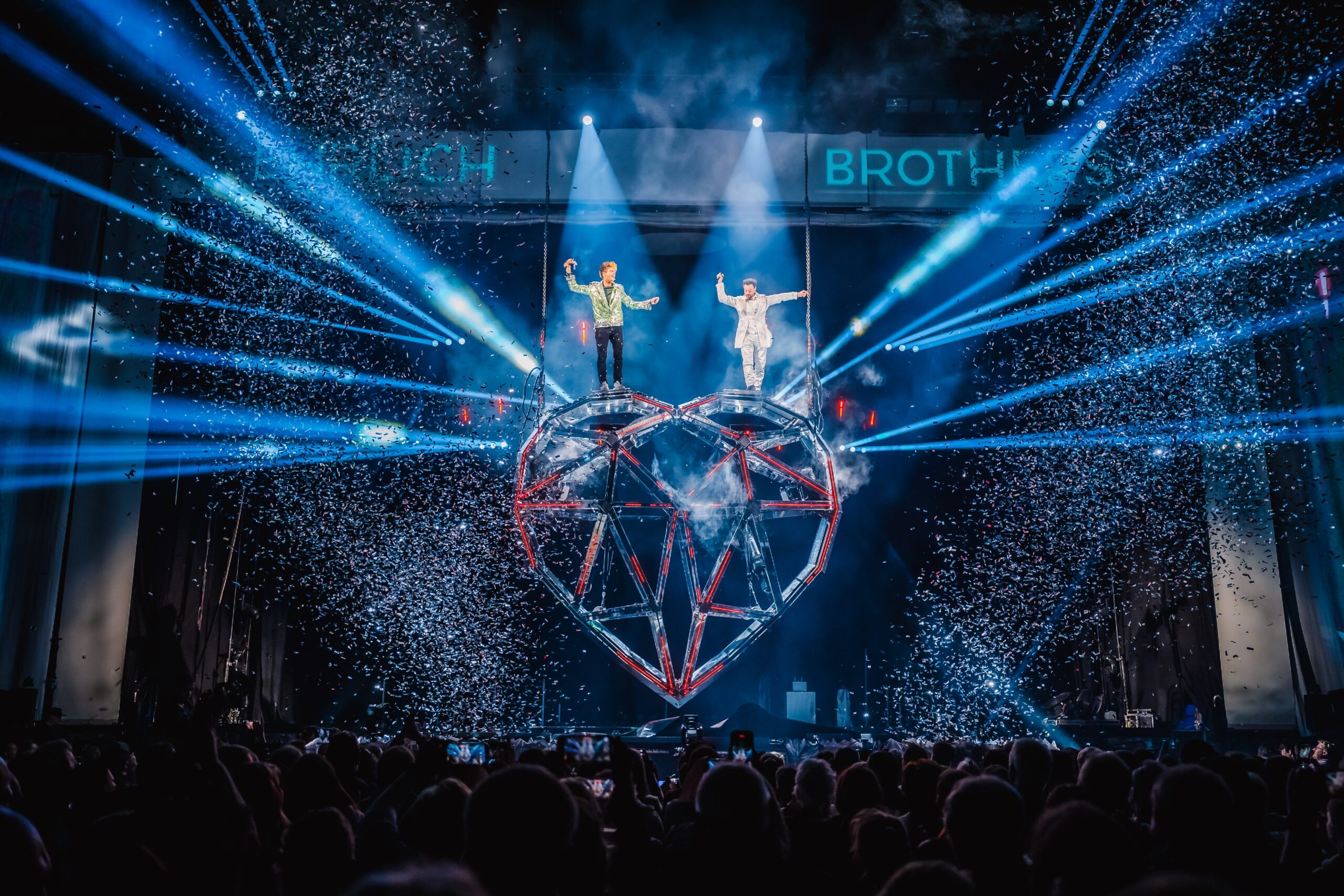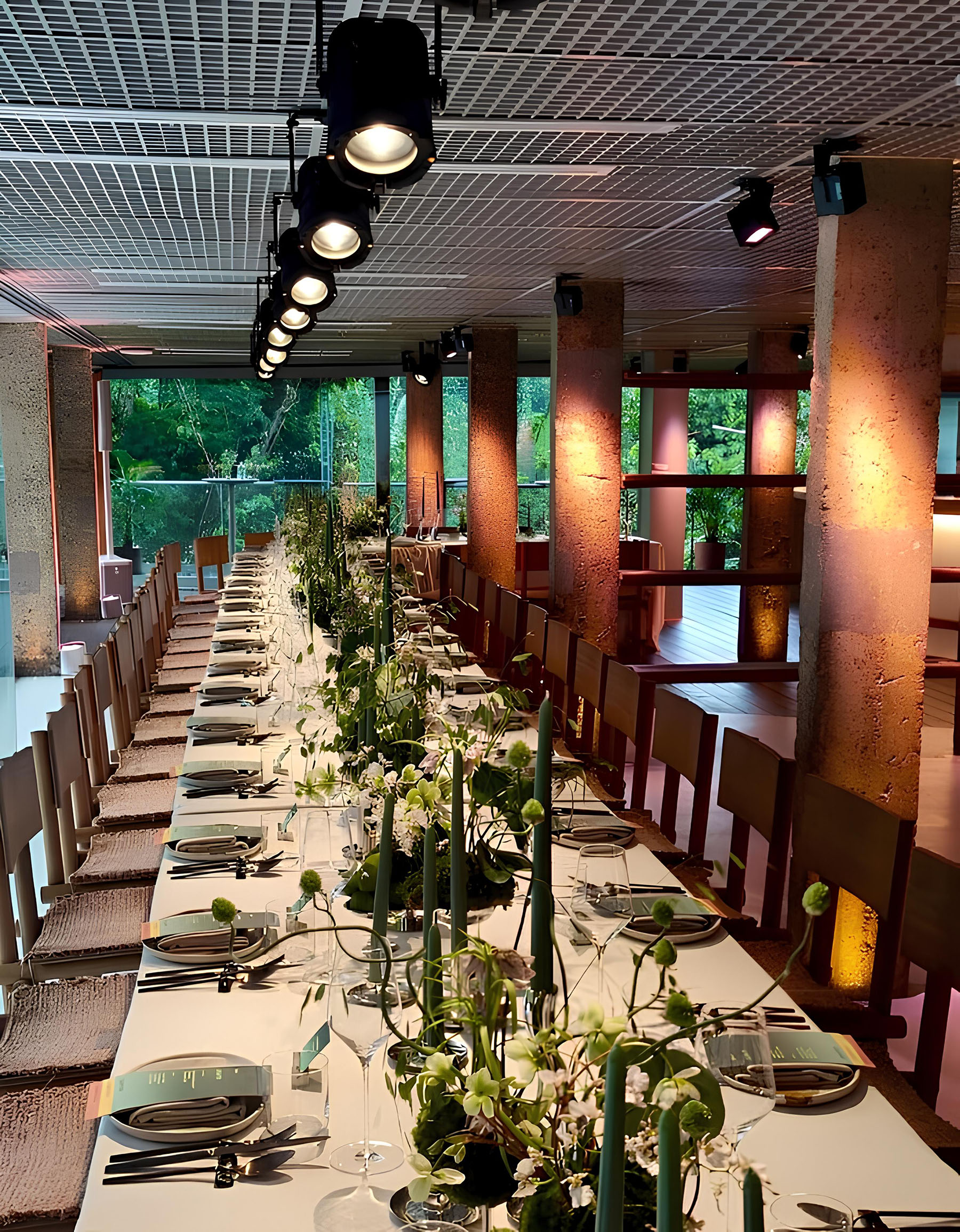LONDON – Renegade's Nick Gray designed lighting for the main British Fashion Council (BFC) Tent and peripheral areas in and around Somerset House for London Fashion Week, along with off-site shows for the Matthew Williamson, Temperley, Julien Macdonald and Hardy Amies collections. His focus once again was to put the fashions on display in their best light – for both the human eye and the cameras. BFC Tent
Gray provided the lighting design for the BFC Tent on the grounds of Somerset House for the fourth consecutive season. The design was based on a single central truss, flanked by two off center trusses and a flown, raked front-of-house grid.
For cross lighting onto the back wall/entrance and for silhouette effects, Gray positioned 12 Svobodas for a light beam/curtain effect at the top of the runway.
The overhead lighting consisted of 140 ETC Source Four profiles with a variety of lenses, and the seats were lit with Bambino Fresnels. The whole lighting aesthetic and raison d'être was to depart from a purely tungsten "classic" rig and match the more natural and organic look of the tent this year, which featured a wooden floor.
Gray also specified some 10K projectors for producing specials on a cyc for selected shows, and all lighting was run from a grandMA console, operated by Paulus van Heijkant. The lighting crew chief was Ben Howells and the equipment for the tent was supplied by Neg Earth.
Gray's brief also included the lighting of several other LFW areas within the BFC Tent and Somerset House, including the Reception. Here he chose eight of the new Moll Richardson silver 5K Sky Pans, using them to create a general wash while catching the eye with their "dish" appearance. They were accompanied by 30 chrome PAR lights, all hung on two trusses installed in the roof.
In the BFC Lounge area, Gray went for a different look, sourcing a quantity of orange 50cm Tom Dixon fluorescent globes and eight classic MacLamp angle poise lamps (designed by interior style guru Terrance Conran in the 1960s) in gold, red and yellow, letting the custom lighting fixtures from Shok London add to the scenic design.
The back-of-house and hair-and-makeup areas were lit with truss mounted Codas and PAR cans, and in the Canon Centre, several bars of Source Four PARs provided working light for the press and media.
In the Portico Rooms, the main Somerset House presentation space, Gray had Shok London supply a custom powder-coated white scaffolding system, complete with a set of silver studio PAR cans and barn doors, plus a Hog iPC laptop for control.
For the Registration Area in the Siemens Hall, Gray specified another white scaffolding system from Shok London, complete with chrome PARs and chrome Deco PARs.
Matthew Williamson at the Phillips De Pury Gallery, Victoria
This space was intriguing, but a real challenge for rigging, with angled gallery walls, arched ceilings and no obvious hanging points. There was also no catwalk as such – the models instead used a U-shaped path on the floor.
Gray lit this with 26 4×4 Kino Flo units and installed three front lighting positions, the first was a goal-post supported grid behind the camera platforms and the others were flown from sections of truss positioned at the first turn of the catwalk and behind the second bank of seating, all populated with Source Four profile lights.
He wanted to create a sense of clarity, cleanness and a smooth and even coverage of light, and as there was insufficient power for a full Source Four rig, he used the Kino Flos instead.
General room lighting was created using 44 Shok London wireless LED uplighters, programmed for pre- and post-show effects.
Lighting control was via a Hog3 console operated by Trent O'Connor, and the gear was again supplied by Neg Earth.
Julien Macdonald, One Mayfair
The former St Mark's Church, completed in 1828 is a fine example of Greek revival style architecture. It immediately lent itself to a moody and atmospheric lighting vibe that was also ideal for the Macdonald show, offering Gray the opportunity to use plenty of more unorthodox fashion show lighting techniques including light and dark spots and shadow play.
Also, due to space and rigging restrictions, he reduced the front lighting array to a single location right at the end of the zig zag route runway so the photographers could get their shots from there.
Before this point, the models emerged from behind the altar in darkness, were partially lit and highlighted with shadow details as they traversed the catwalk. After they reached the back of the seating, they walked down the center of the church, turned left then up and across the back of the space, creating even more challenges for lighting and where to position kit.
Drama and edginess dominated the visual ambience. The show was accompanied by a hard-driving heavy rock soundtrack, and Gray produced big strobing moments and other effects on the back wall before the models stepped on to the runway.
Using the lack of flying facilities for any side or overhead lighting to his atmospheric advantage, Gray had lights rigged along the under-balcony areas to the left and right which partly illuminated the side catwalk runs.
For the middle part of the run, the light levels increased as he had the space to place overhead lighting, and the models then finished up in front of the FOH lighting gantry for the photos.
To further enhance the architecture, the venue's pillars and arch details were skimmed with light, and the stained glass window behind the altar was illuminated to create a striking ecclesiastical backdrop.
Lighting fixtures used for this show were Source Fours and Source Four PARs supplied by White Light and Martin Professional MAC 101 LED washes for the glass backdrop from Shok London, together with 40 GDS wireless LED uplighters. This was operated by Adam Baker using a grandMA console.
"The diversity of the shows this season was really creatively inspiring, and so I was able to come up with a stream of more unusual solutions, all demanding and each with their own challenges," Gray said. "It was hard work for everyone, and saw some great teamwork between all the technicians and crew involved."
Alice Temperley at the British Museum (Main Hall)
Alice Temperley presented her 10th anniversary collection at the British Museum – the first time a fashion show has ever been staged in there.
Gray and his crew's main challenge was the tight load-in. They had two hours to start and build the trusses between 7am and 9am, and then another two hours between 6pm and 8pm to finish off, focus and program. The show started promptly at 8.
Using a minimal approach and just 32 Source Four profiles with different angled lenses, Gray enhanced the architecture and lit the large curved wall and stone staircases which define the space using high-contrast lighting effects.
Lights were located in six key positions and wireless DMX was used to help meet the load-in time constraints. White Light supplied the gear, with Chris Fyfe using a grandMA ultra light console for control.
Hardy Amies, 14 Saville Row.
This show took place in the showroom of the classic British men's tailor and dressmakers at 14 Saville Row.
Gray's design used 12 Chrome Source Four profiles and a white trussing system – supplied by White Light. Adam Baker was the crew chief and the operator was again Chris Fyfe, and the show was enhanced with a post-show video.
For more information, please visit www.renegadedesign.co.uk.
All Photos by Ian Hunter







